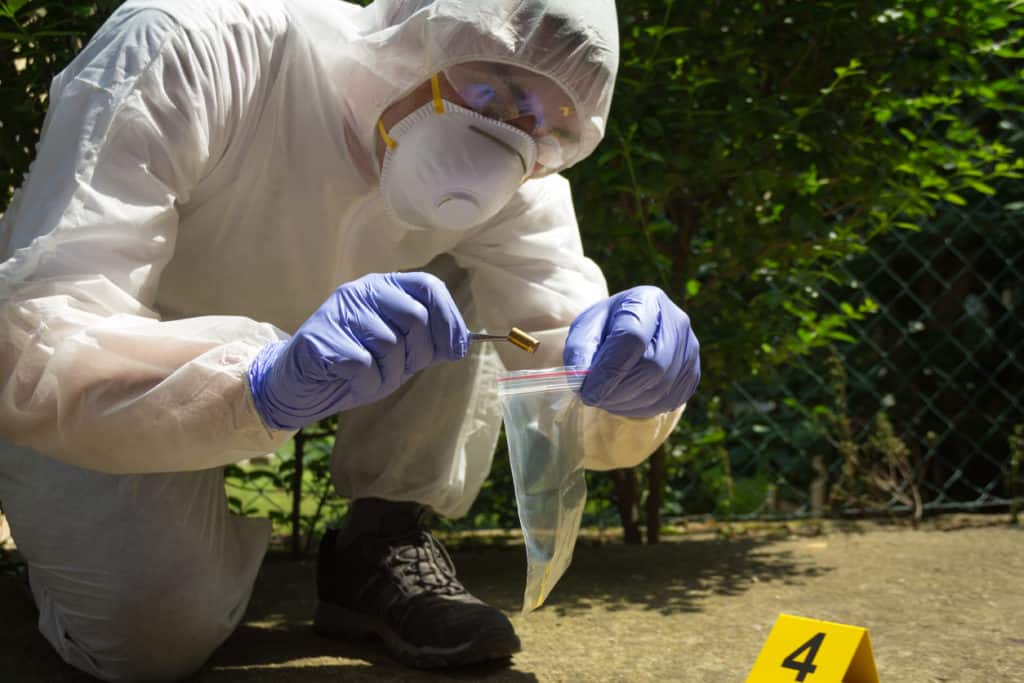There’s a certain “Zen” in what ways a crime scene is documented.
Thinking behind documentation – “finding mindful awareness of the present” – is as important as methods used. An investigator can have all the current tech available to document a crime, but if they aren’t “in the moment,” their case can fall apart.

When I instruct major crime scene processing and management, I tell officers their first task is to slow down and take a deep breath. Or several. A crime scene investigator is a “last responder.” Stretching time aids investigation.
The cliché, “It’s a process” applies: slowing down to observe, absorb, sense, and allow intuition as a trained and experienced police officer or civilian crime scene investigator to come forth, are all part of critical thinking and problem solving inside a scene. If it sounds melodramatic, consider this … there are human senses well beyond the basic five we were taught as children; some claim there are up to 20 and as many as 33.
So, in what ways is a crime scene documented? Where does an investigator start?
Documentation thinking begins with the scene “walk-through” done before any processing. It’s just that – a walk through the scene by the ranking CSI, primary investigator, and assigned prosecutor. Three people. No cameras, notebooks, computers, or measuring devices. Thinking time. Nothing touched. The trio focuses on what the scene contains, what forensic and investigative actions physical evidence directs, how items relate and tie into what is known … sights, smells, tastes, sounds, spaces, distances … each person’s best senses and intuition contribute to conversation.
Documentation thinking continues with the crime scene team. While evidence directs their forensic actions, a CSI must constantly question what they are doing with an eye toward the end game – what needs to be processed, and in what order? What methods hold up to standards, training and best practices? What will be challenged? Is this better handled by the lab? Do we need to consult with an expert? Imagine a defense attorney better trained and more experienced in forensics will cross-examine you at trial.
Documentation relies on its oldest form. Writing. From observations to conclusions drawn, if it’s not written down, it WILL be challenged in court. Your credibility will be questioned as to why it wasn’t documented. Documentation begets documentation. Notes lead to reports. Whether photograph, video, audio, swab container, lift card, report, or evidence packaging – all require additional documentation of or upon itself. Collection of physical evidence is also documentation. Writing about it verifies. It gives credibility to the evidence, its collection, and the collector.
The actual act of writing, particularly hand-written observations, thoughts, and ideas, slows us in positive ways. Therapists recommend it to clients to draw upon senses to problem solve, arrive at conclusions, and act. No different for a crime scene investigator. Slowing down brings out details. Taking time to review scene images (like those collected by L-Tron’s OSCR360 spherical photography solution) helps investigators write during investigation, and aid recall at trial.
Scene Documentation checklist:
- Still photography – standard DSLR, macro, microscopic, aerial. This piece on the types of photographs taken at crimes scenes is a good reference.
- Spherical photography – utilizing OSCR360, these may replace overall photos and provide a walk-through of the scene/all evidence.
- Video imagery – security camera, body camera, forensic scene footage.
- Measurements – tape measure, laser, 3-D scanning, photogrammetry, GPS.
- Diagramming – hand-drawn, CAD, 2-D, 3-D, animation, AI interactive scene reconstructions.
- Testimony – written, audio/video recording (officers, witnesses, victims, suspects).
- Pre-crime – deeds, architectural drawings, aerial images, maps, historical records.
- Scene log – the comings and goings of personnel, times and reasons (first responders, lab personnel, consultant experts, locksmiths, emergency property enclosure).
- Administrative reports – initial crime report, property custody reports, photo logs, investigative reports, lab submission forms, lab reports.
- At scene aids – evidence markers, scales, property tags, evidence packaging, officers’ field notes.
- 911 call recording – initial reporting, background sounds, location information.
The concept of slowing down is tactical in practically every aspect of law enforcement. Hostage situation. Barricaded gunman. Criminal and crash investigations. Accidents. Internal affairs. Testifying at a trial. And crime scenes.